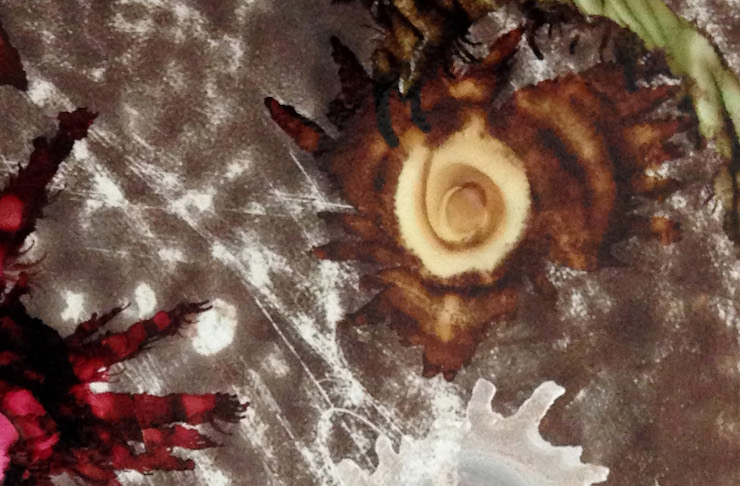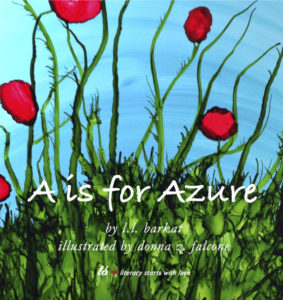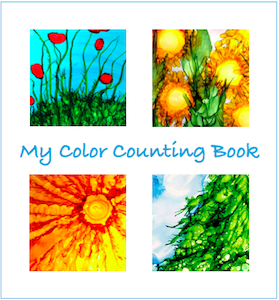There are over ten million colors in the world, and that’s just the ones we can see. We tend to learn about the basics, but why limit ourselves? Colors have cool histories, intriguing origins, cultural meanings, wonderful names. Plus, they are often quite beautiful. And beauty is showing promise as a way to help kids (and us!) learn.
With all this rich possibility swirling in the world, we invite you to take a journey into colors—whether you are 5 or 50 or even 85. Use them to teach yourself fascinating things about history, science, language, and culture (maybe even math!). Go on color treasure hunts, taste them or tinker with them. We’re here to send you on your colorful way, continuing our color journey with jasmine.
Of course, in our very own alphabet book, we also include old favorites like red, orange, yellow, green, blue (as part of the denim page) and purple. But with 26 letters to illustrate, we also saw a beautiful opportunity: to paint the world from an azure sky to a zaffre goodbye.
How to Pronounce jasmine
5 Fun Facts About Jasmine
1. The color jasmine comes from the pale yellow color in the jasmine flower.
2. The Arab Spring began in Tunisia in late 2010, in a resistance movement known as the Jasmine Revolution, in recognition of Tunisia’s national flower, jasmine.
3. In India, jasmine is known as the Queen of the Night because the flower’s perfume is released after dark.
4. Jasmine flowers are believed to have medicinal qualities in China, where they may be used to “cool” the blood as well as perform antibacterial, antiviral, and anti-tumor functions. The flower can also help lower a fever or cool down a person who has become overheated.
5. In addition to Tunisia, jasmine is a national (or state) symbol in Hawaii, Indonesia, Pakistan, and the Philippines.
Take a Color Walk
One great way to become more attuned to the colors around you is to take a color walk. It’s easy to do: simply decide on your color-of-the-day, and look for it wherever you roam. Take pictures, jot notes, or just keep your findings in mind. If you feel so inspired write a color vignette when you get home.
Count Your Colors
For younger color walk participants, we’ve created a special My Color Counting Book that reinforces color names, days of the week, sorting, counting, and adding. Just print and enjoy, at home or for a math or literacy center in the classroom!
Jasmine Haiku Poetry Prompt
Try your hand at a jasmine haiku. Use the “fun facts” or findings from your color walk as inspiration if you like. Need more inspiration? Check out our haiku infographic.
Brilliant ink-on-tile illustrations created with a secret process bring the alphabet to colorful life. Children will delight in the rich, poetic language of colors like emerald, jasmine, and quartz—while also meeting old favorites like yellow, orange and purple.
Related Article at Huffington Post: 5 Great Reasons to Color the Core of Kids’ Learning
- Free E-Book + Poetry Prompt! - April 14, 2025
- Braving the Poem: Interview with Catherine Abbey Hodges - March 24, 2025
- National Poetry Month Is Here + Prompt! - March 14, 2025



Will Willingham says
Could call this a found poem, as it includes a line from one of the articles researched to find the fun jasmine facts. 🙂
On the need for bees and other forms of assistance
In the case of jasmine,
stamens and pistil
develop separately
different times
difference places
so that self-
pollination
just
doesn’t
work
Donna Falcone says
LW that is interesting! It sent me googling more and I found that Jasmine and Olive related… cousins, perhaps? I suddenly imagined Popeye’s gal with a Jasmine blossom in her hair HA!